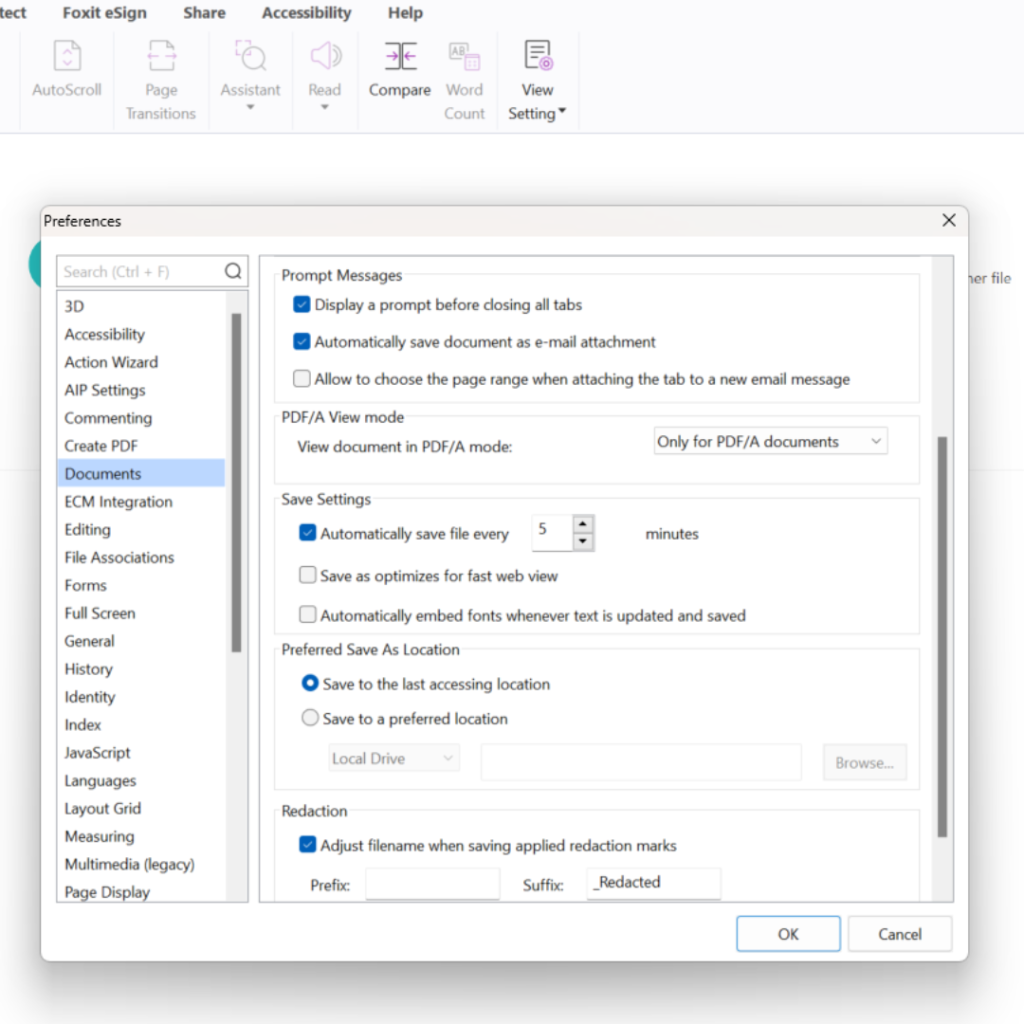- February 7, 2023
- Karolin Koestler, Senior Marketing Manager EMEA
When saving PDF files, you’ve got quite a few options.
Your changes can be saved to a PDF, PDF Portfolio, or a copy of the PDF. You can also save PDFs as HTML, RTF, TXT and Microsoft Office files.
Foxit PDF Editor also enables you to save your PDFs to ECM systems (including eDOCS DM, SharePoint, Documentum, ndOffice, iManage Work, Enterprise Connect, Worldox, ShareFile, Epona DMSforLegal, and Alfresco) and cloud services (including OneDrive for Personal or Business, Google Drive, Dropbox, Box, and Egnyte), as well as to local drives. When saving or saving as PDFs, Foxit PDF Editor will optimize PDFs by removing redundant data, including deleted pages, objects, and annotations.
- You can save any changes to the file by choosing Save.
- You can save a copy of a PDF by choosing File > Save As.
By default, Foxit PDF Editor saves the changes to a file every 5 minutes automatically in case of a system crash or power failure. If the application closes before you can save changes to a file, the next time you launch Foxit PDF Editor, it opens the recovery file automatically. The recovery file contains your changes up until the last time Foxit PDF Editor saved the document.
Save a copy of a PDF
- Select File > Save As.
- In the Save As dialog box, enter the filename and location, and click Save.
- To recover the last saved version of your PDF, choose File > Revert.
- When you save a PDF to Google Drive, Foxit PDF Editor allows you to save the PDF as a Google Docs, Google Sheets, or Google Slides file.
Save PDFs in ECM systems or cloud services
Click File > Save As > Add a place > choose an ECM system or a cloud service, then sign into your account, and choose a folder to save to. The account will be listed in the Save-as history for your convenience.
You can also pin the frequently used folder under local drives, OneDrive for Personal or Business, Google Drive, SharePoint, Dropbox, or Box to the Recent Folders list or unpin it, which allows you to save your documents with just one click.
To customize the number of documents or folders in the recently used list, go to File > Preferences > History.
How to recover the last version of a PDF that you saved
If you accidentally close the PDF file before saving it or experience an unexpected shutdown, simply open the file in PDF Editor. Click Yes when prompted to open the autosave or files. PDF Editor will open all files if multiple files were open. Save the file (or files) with the same name as the original files.
How to use Autosave
Autosave protects your work from being lost in the event of a power outage by saving files to a specific location periodically while you work. The file’s original content is not altered so you’ll get back whatever was last saved.
PDF Editor creates an automatic save file of all changes to the file. This includes any changes made since the last automatic save.
The frequency that PDF Editor saves the autosave files will determine how much new information they contain. You could, for example, lose only four minutes of work if you set the autosave interval at five minutes and an unexpected shutdown occurs. Regular automatic saving helps prevent data loss. This is especially useful if you make significant changes to a document, such as adding comments. Consider Autosave your failsafe to protect your work.
To enable automatic saving, simply do the following:
- Select Documents in the Preferences dialog box, under Categories.
- Select Automatically save file every X minutes and indicate the time interval you prefer.

As you now know, there are many options for saving PDF files that are worth considering to save you time and frustration. Give them a try to improve your workflow.
